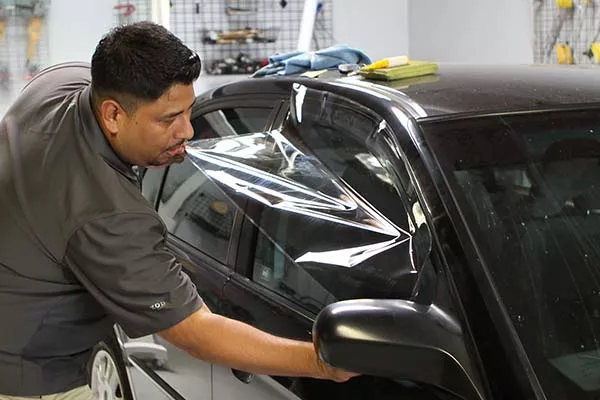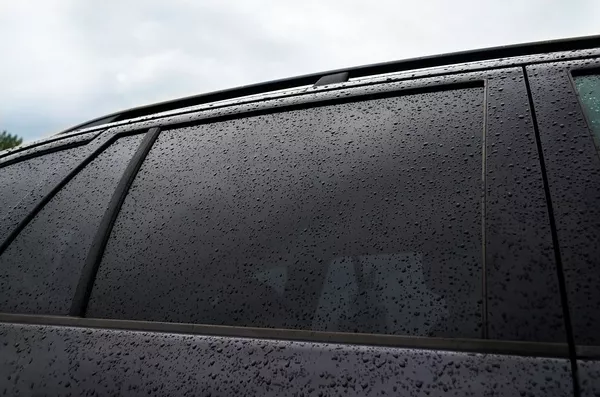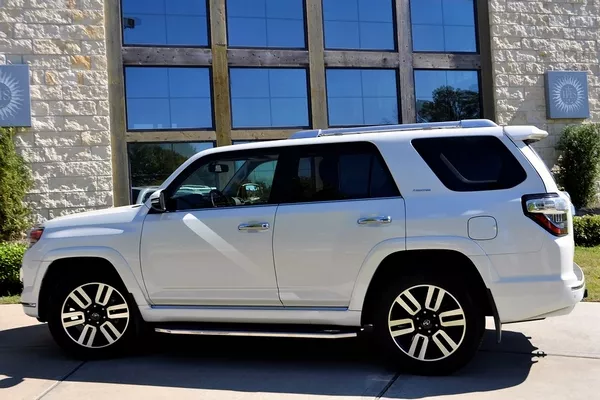For a tropical country like the Philippines, heat and humidity are constant issues that can make even the most dedicated driver flinch. It’s this time of the year that making your car swelter-proof becomes all the more important. Cleaning/repairing the onboard airconditioning is one, the other is having window tint installed.
Car window tints especially have become one of those freebies that dealers offer (and buyers expect) with a new vehicle; sort of a bonus to soften the impact of such a significant expense. Car owners can be very particular about the kind of tint installed on their rides, because of both its aesthetic effect and utilitarian purpose.
How to Tint a Door Window
1. What exactly is car window tint?
It’s a thin laminate film, usually made from polyethylene terephthalate, applied to the inside or outside of glass surfaces such as those used in houses, buildings and cars. There are numerous reasons for using window tint on your car:
- To reduce heat and glare;
- To filter out harmful ultraviolet (UV) rays that can damage both skin and the interior’s surfaces;
- To give safety and security from prying eyes.

Without tint, you'll be driving a hot car in more ways than one
For cars especially, window tint falls into one of two major categories: non-reflectorized and metallic film.
The former regulates glare by absorbing sunlight, and they help you see better by increasing optical clarity and quality, although they’re not as effective against heat. Metallic films, meanwhile, reflect sunlight to protect the cabin against heat damage. The downside to this, however, is that the reflective material tends to interfere with communications signals such as those used by cell phones or GPS navigation.
There are also a variety of materials used to make car window tints, usually dyed film, carbon film and ceramic film:
- Dyed film is the most affordable in the market, but it also tends to need replacement more frequently;
- Carbon film is more robust and is more resistant to discoloration, but it sometimes has problems dealing with glare and haze;
- Ceramic film can overcome these issues while offering a high rate of heat rejection, at the expense of oxidation and fading.

Car window tint is a thin laminate film, usually made from polyethylene terephthalate
Having window tint installed on all windows is the most ideal for energy efficiency, as their heat rejection properties reduce the work of the air conditioning in keeping the interior cool. There are some who would have only the rear windows tinted for privacy, leaving the front windows and windshield clear for driving, especially at night.
More than just window dressing, car window tints play an important role in protecting you and your car from both natural and man-made hazards, apart from giving you a more comfortable ride whether sitting in a traffic jam for hours or devouring the miles on a highway cruise. As you can see, it’s not something that should be taken lightly, so here are a few tips suggested by Philkotse.com to keep in mind when deciding to tint a car.
2. Choose the right car window tint with 7 tips
Familiarize yourself with the relevant laws
A lot of people hold the belief that cars are private property, and should, therefore, be off-limits to government oversight; nothing could be farther from the truth.
For starters, cars need to be registered with the government every year in order to be able to use the road. And there are pertinent regulations governing most of the car’s features, window tints included.

Excessively dark tints make it more difficult for traffic enforcers to monitor vehicle occupants
Mirror tints are largely frowned upon since they tend to reflect glare towards other drivers, preventing them from seeing the road clearly (and in a lot of instances, temporarily blinding them enough to get into an accident). And excessively dark tints make it more difficult for traffic enforcers (and traffic cameras) to monitor vehicle occupants for possible violations such as using gadgets while driving and non-use of seatbelts.
The Department Of Transportation (DOTr) is said to be consulting various stakeholders on possible car window tint guidelines which it aims to release within this year, so until that happens, better be on the safe side and stick with proper car tint shades that won’t give them enough reason to flag you down and cite you for a penalty.
Get to know the available options in the market
Car window tints come in a range of colors that you can choose to complement your car’s finish. More importantly, tints also differ in the intensity or extent that they can block visible light from outside; these are referred to as shades.
A clear shade of tint provides protection from UV rays without changing the appearance of your vehicle, perfect if you’re looking for a clean look. It can also protect your glass from scratches. A light tint enhances both interior and exterior visibility while reducing eye strain on your part by cutting down on glare, without affecting electronic devices that rely on wireless signal reception, such as your car’s keyless entry.

Window tints keep your car cool as well as protect your privacy
If you want increased privacy and style, then medium tint is the way to go, blocking up to 99% of solar rays and giving exceptional heat rejection. For maximum privacy and thermal insulation, there’s dark or limo tint available.
>>> Related: Choose the best car window tint: Essential tips & tricks for Pinoy drivers
Premium vs. regular car window tint
You’ll need to weigh cost and long-term usage when choosing between the affordable, regular tint and the more pricey, name-brand kind. How much are you willing to pay for car window tinting? How often will you be using the car?
Bargain to discount the car window tinting price is adviced but it doesn’t always end well, as cheaper tint tends to bubble, fade and even peel off over time, which isn’t exactly ideal for visibility, protection and the aesthetics of your car.
Know where to use tint (and where not to)
Window tint certainly helps your car’s looks and functionality, but like everything else, it shouldn’t be overdone.
The side mirrors and rear view mirror, for instance, should be kept clear at all times. For the parts of the car that do need tinting, it’s usually up to your discretion. If you just need privacy for your rear passengers, limit the dark tint to the rear windows. 3m car tint is recommended if you don't want to waste both time and money for unnecessary parts.

Some owners limit their window tint to just the rear glass
The particular car tint shades will also depend on your situation. For instance, if you feel you’ll have difficulty seeing at night, then you can have just a visor tint installed across the top part of the windshield, instead of having it entirely coated in tint film. Try to see how dark can you go without sacrificing your visual acuity.
Get a professional to do it
Knowing where to have the car window tint installed is just as important as the kind of tint to use. Watch out for backyard installers who will offer you outrageously low rates for installing your tint; a haphazard job will only end up wasting your money and the material you chose.
A professional tint installer is equipped with the proper training and attention to detail required to correctly install your selected tint and will make sure that it lasts for years, giving you the best car window tint with protection and peace of mind that you paid for.
Know how to take care of your tint
Once the tint is applied, you should avoid using the window i.e. raising or lowering it for a few days or until you have made sure that the tint has dried fully. Don’t risk pulling it loose, which can undo the installation, forcing you to take the car back to the shop and pay to have it reinstalled.

Tints can enhance the look of your car
Also, keep sharp objects away which can puncture, scratch and damage the window tint. When cleaning, use a soft paper towel and ammonia-free cleaners, or a microfiber towel.
>>> Related:
Find out if the car window tint comes with a warranty
The more popular tint brands will most likely come with a product warranty against defects and faulty workmanship. Different installers might offer different warranties, even if it’s the same product they’re selling, so you’ll need to confirm the extent of the warranty coverage as well as the conditions involved before making a purchase.
Whenever possible, make sure your installer completely fills out a manufacturer’s warranty; this will get you covered in case your particular installer goes out of business for any reason.
>>> Click to learn more useful tips for car maintenance
Recent posts
- [Philkotse guide] Tint your car windows by yourself: This is how! Aug 16, 2022
- 8 DIY- steps to tint your tail lights properly Aug 16, 2022
- Philippine National Police to crackdown on vehicles installed with very dark tint Mar 20, 2019
- 4 easy steps for Filipino car owners to remove your car's tint bubbles Jun 14, 2018
- How to remove stickers from your car’s windows and windshield Jan 21, 2021












